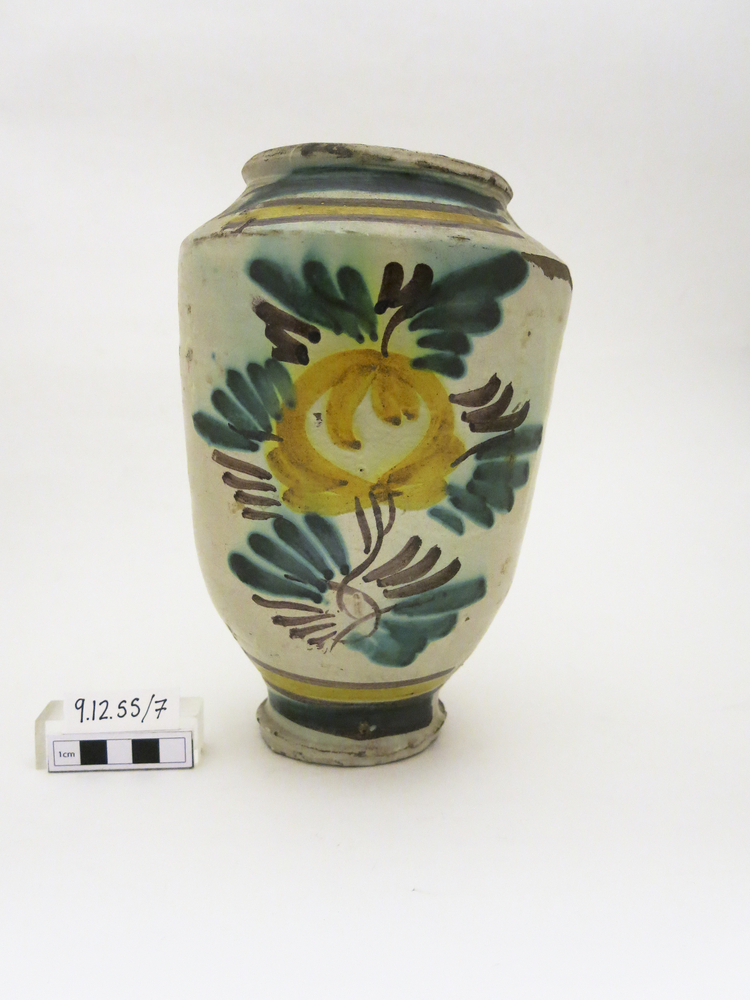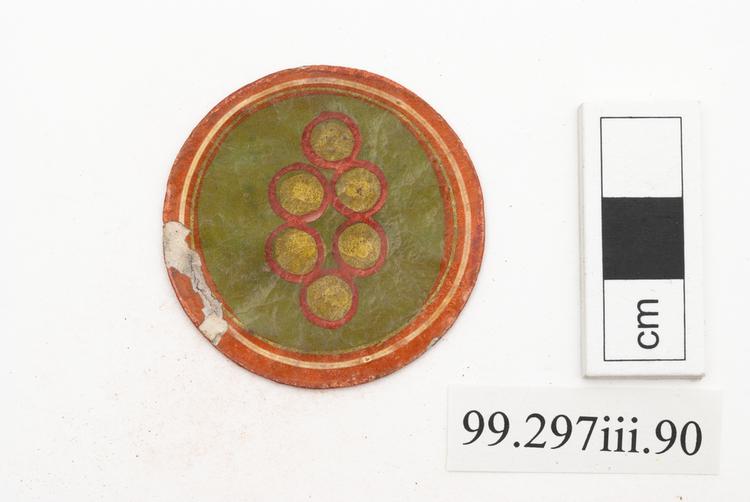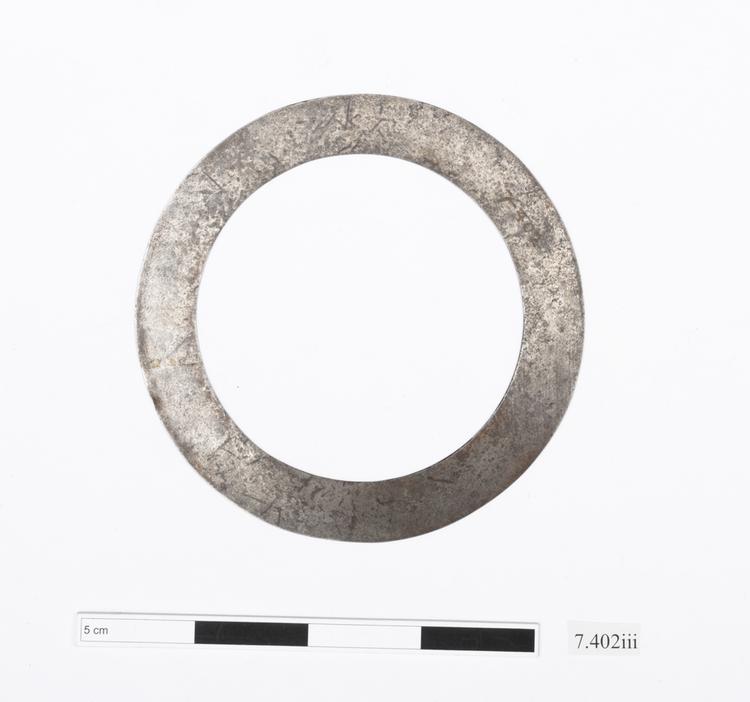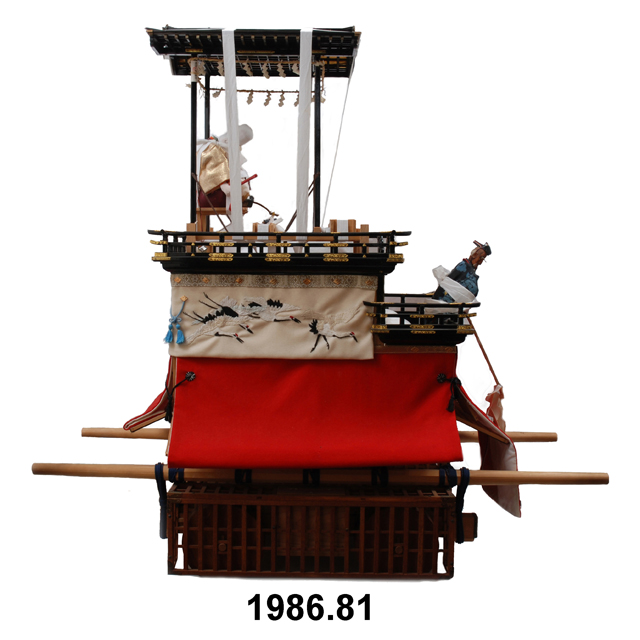
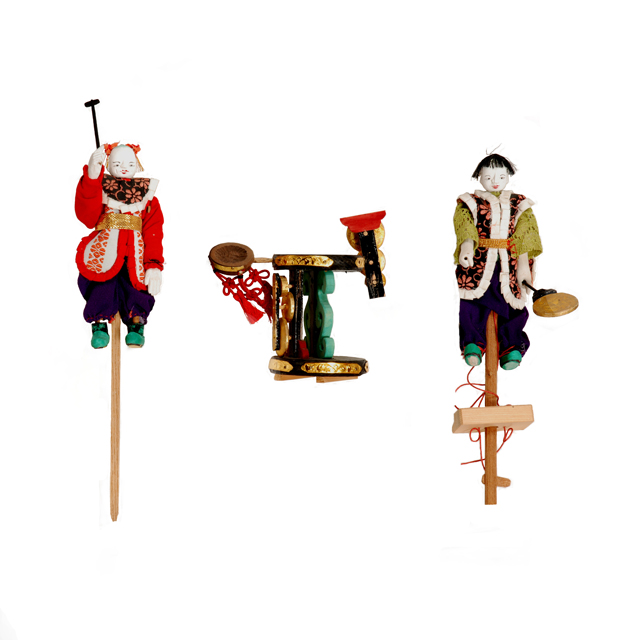

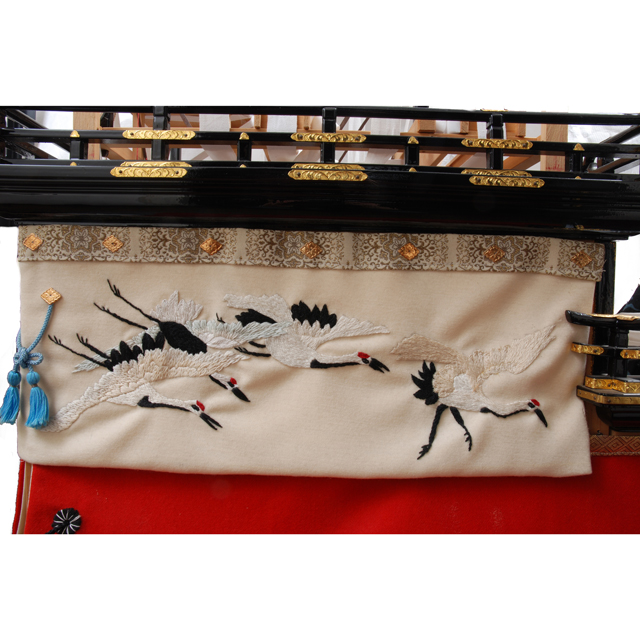
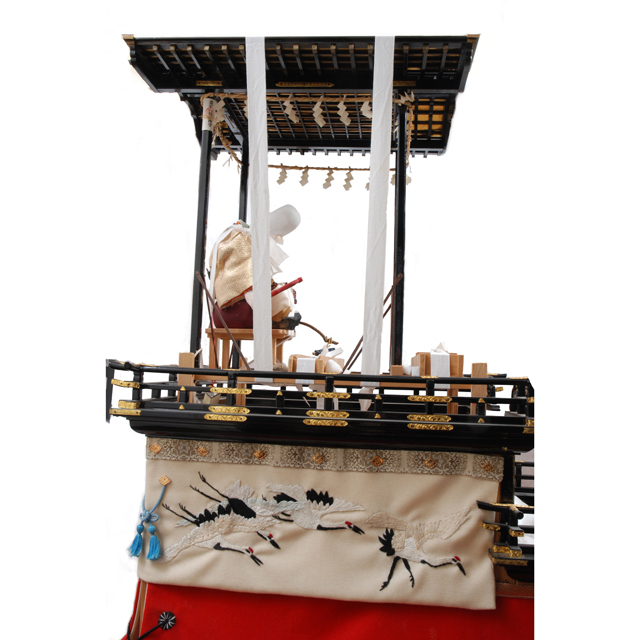
Replica, one fifth the size, of the Fukurokuju-sha chariot from Wakamiya Hachiman-sha shrine in Nagoya. No nails or glue are used in the construction. It took five years to complete. The Fukurokuju-sha is typical of the Nagoya-style chariots developed for the dashi karakuri festivals. Built on two storeys it is constructed of wood, mainly hinoki (Japanese cypress). The upper storey, called the uwayama, has a distinctive curved roof, which may be lowered to allow the chariot to pass under the big city gate. Four pillars made of oak decorated with lacquer and filigree metalwork support the roof. The uwayama is surrounded by a koran or wooden balustrade. The principal puppet is placed at the rear of the platform and the performance takes place on the stage area in front of it. The six to eight manipulators, concealed by the omaku, sit in the space immediately below. The lower storey is called the maedana (literally the front shelf) and it is here that the mae ningyo (in the chariot the heifuri otoko, the figure of the salt seller holding a Shinto gobei staff) is placed. The ten or so musicians sit below the lower storey.



